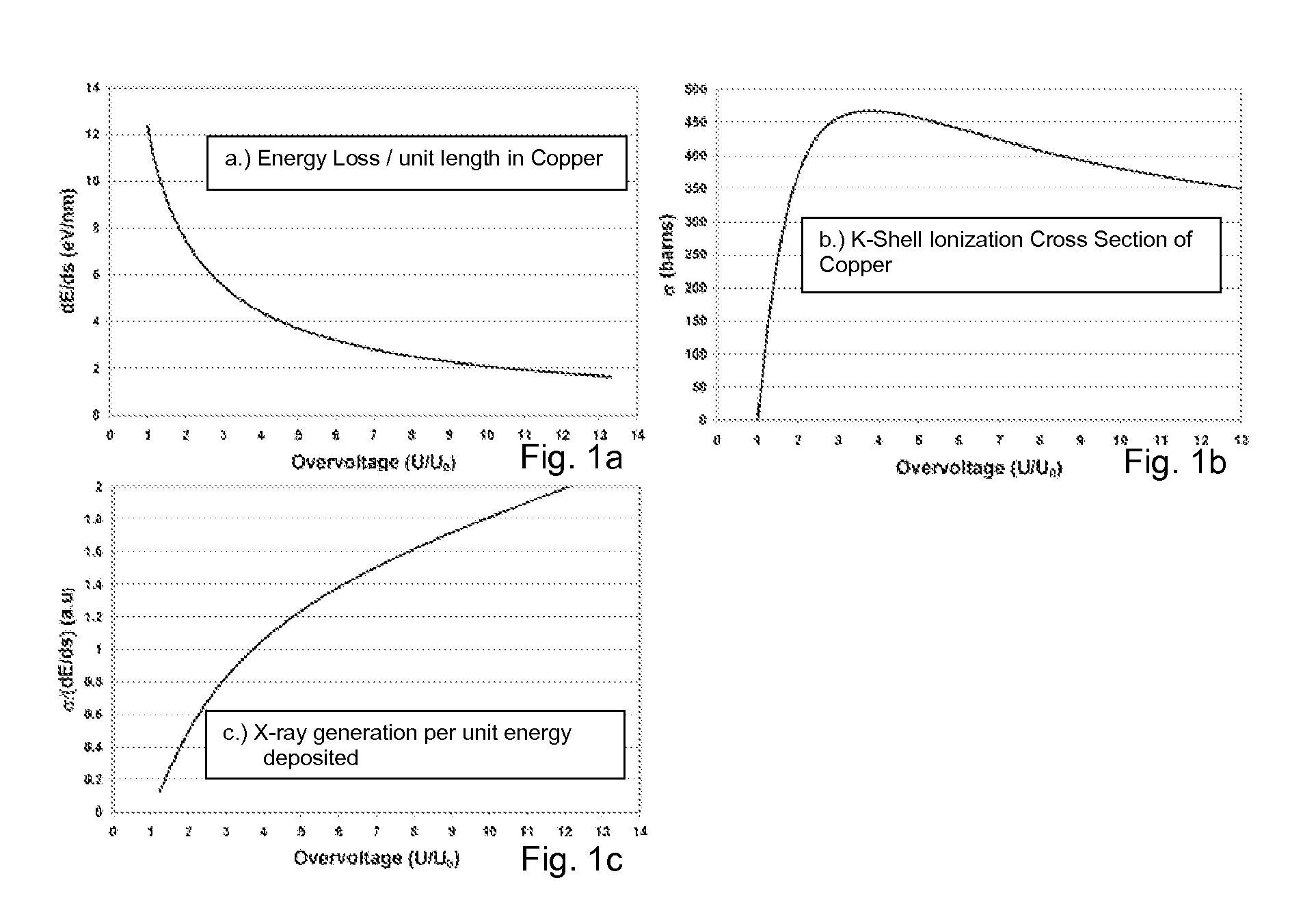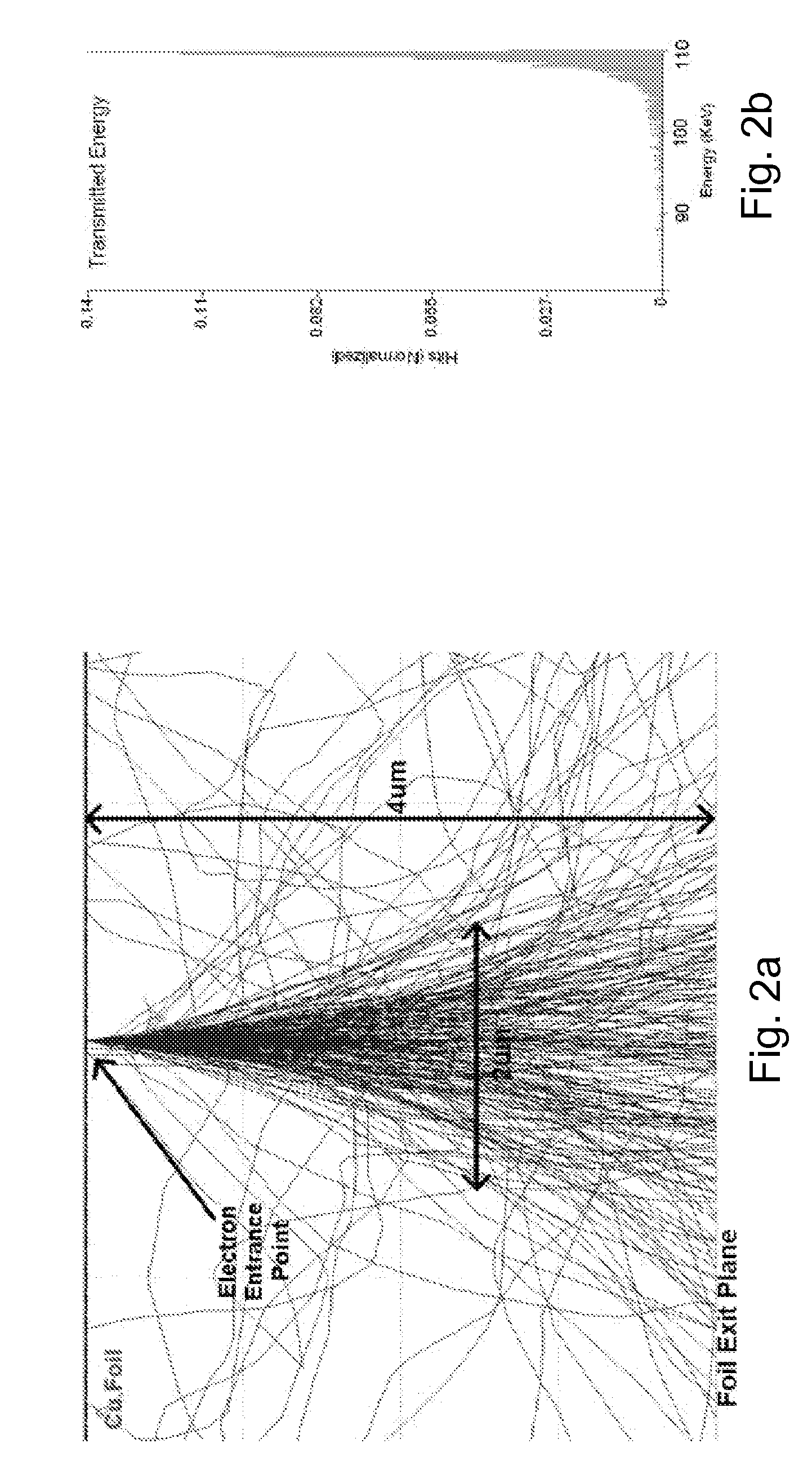Structured anode X-ray source for X-ray microscopy
a structured anode and x-ray microscopy technology, applied in the direction of x-ray tube target and convertor, x-ray tube laminated target, etc., can solve the problem of increasing the brightness of this type of source due to the melting of the anode target, the current cost of accelerator and miniature synchrotron source, and the method is limited to soft x-rays, etc. problem, to achieve the effect of improving performan
- Summary
- Abstract
- Description
- Claims
- Application Information
AI Technical Summary
Benefits of technology
Problems solved by technology
Method used
Image
Examples
Embodiment Construction
[0025]Roentgen discovered in 1896 that when energetic electrons hit a target, x-rays are generated. This basic principle is still used in almost all commercial laboratory x-ray sources. The generated x-rays do not all have the same energy (and equivalently wavelength), but have a spectral distribution that contains a broad Bremsstrahlung (braking radiation) component and very narrow x-ray spectral lines known as the characteristic radiation. Many applications use the combined x-ray output e.g. medical radiography. However, applications that require strictly quasi-monochromatic (single wavelength) x-rays can only use the narrow x-ray lines of the characteristic radiation. For these applications, which include x-ray diffraction, small angle scattering, or x-ray microscopy using zone plates, the Bremsstrahlung component yields unwanted background and is suppressed by energy filtering or eliminated by monochromators. The following discussions only focus on characteristic x-ray radiation...
PUM
 Login to View More
Login to View More Abstract
Description
Claims
Application Information
 Login to View More
Login to View More - R&D
- Intellectual Property
- Life Sciences
- Materials
- Tech Scout
- Unparalleled Data Quality
- Higher Quality Content
- 60% Fewer Hallucinations
Browse by: Latest US Patents, China's latest patents, Technical Efficacy Thesaurus, Application Domain, Technology Topic, Popular Technical Reports.
© 2025 PatSnap. All rights reserved.Legal|Privacy policy|Modern Slavery Act Transparency Statement|Sitemap|About US| Contact US: help@patsnap.com



